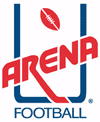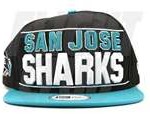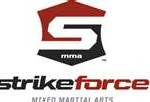Growth potential, disruptive technology and profit economics top the list of factors influencing an emerging company’s value.
But without perceived brand value embodied in its image/reputation/marketplace validation, customer excitement/buying traction, a multi-layered “story” that piques imagination and a prominent scent of innovation and leadership, investors will never even get to the due diligence process, let alone ask for the financial statements.
We have exerted an important impact on building high order company value that was embraced by investors, subsequently measurably enhancing the purchase price of four companies and their assets.
 In the mid-80s, it was Arena Football, helping client inventor/founder Jim Foster refine the game’s attributes and validate or repudiate his early assumptions about how the game should be played and what would appeal to fans. The end product was a compelling case for how Arena Football could succeed and should be marketed, to whom, the plan for which helped Foster find the owner/investors and a TV network to buy into his ambitious dream.
In the mid-80s, it was Arena Football, helping client inventor/founder Jim Foster refine the game’s attributes and validate or repudiate his early assumptions about how the game should be played and what would appeal to fans. The end product was a compelling case for how Arena Football could succeed and should be marketed, to whom, the plan for which helped Foster find the owner/investors and a TV network to buy into his ambitious dream.
 The online education company, Classroom Connect, was ahead of its time in the late 90s and early 2000s. At its roots was a blend of award-winning online K-8 curriculum content and acclaimed accreditation for teachers learning how to integrate the internet into their day-to-day classroom teaching. . . Its IPO plans slammed by the early decade stock market collapse, growth and survival was tied to attracting expansion capital or selling itself. . . I was the company’s VP Marketing and Business Development heading six departments, all with extraordinarily competent and passionate directors, and we collectively built a prominent national, top-of-mind recognized brand with a loyal customer following coast-to-coast who augmented our marketing efforts with their own good words to others. We hit trade media head-on, dominated trade shows with smaller investments than others, ambushing them through the major local media, even airline publications and dared to run with bold graphically exciting design. We were not your traditional education company. . . and that is why Harcourt Publishing, recently acquired themselves by Reed-Elsevier (then a $7+ billion international publisher), acquired us.
The online education company, Classroom Connect, was ahead of its time in the late 90s and early 2000s. At its roots was a blend of award-winning online K-8 curriculum content and acclaimed accreditation for teachers learning how to integrate the internet into their day-to-day classroom teaching. . . Its IPO plans slammed by the early decade stock market collapse, growth and survival was tied to attracting expansion capital or selling itself. . . I was the company’s VP Marketing and Business Development heading six departments, all with extraordinarily competent and passionate directors, and we collectively built a prominent national, top-of-mind recognized brand with a loyal customer following coast-to-coast who augmented our marketing efforts with their own good words to others. We hit trade media head-on, dominated trade shows with smaller investments than others, ambushing them through the major local media, even airline publications and dared to run with bold graphically exciting design. We were not your traditional education company. . . and that is why Harcourt Publishing, recently acquired themselves by Reed-Elsevier (then a $7+ billion international publisher), acquired us.
 Before the National Hockey League’s San Jose Sharks owned a player, the team, its name, family of logos, fine-tuned color palette and break-the-mold spirit and inspiration had become an international phenomenon. I was the second employee and charged with creating the club’s identity, profitably sustaining it, building a 35-40 person staff and extending the pre-launch global love affair into the real performance-valued hockey world once the first puck was dropped. . . . Not only did we sustain the momentum, we built on it. . . Our intent was to become the most most popular hockey team in the world and to make the Bay Area proud to be associated with us. . . We achieved that and more. . . Our merchandise ($250 million at retail the first two years, one year accounting for 26% of league licensed good sales), featuring Terry Smith’s family of logos, colors that appealed universally to men, women, teens and pre-teens and our made-for-TV new uniform fashion show (featuring Gordie Howe and owner George Gund) put our brand on a pinnacle. Laser technology-enhanced opening week orchestrated by Bob Brand, the birthing of mascot S.J.Sharkie from a CO2-spewing Zamboni (selected by ESPN as the Hockey Play of the Week), then opening again in the new San Jose Arena with Sharks players entering through the iconic shark head tunnel (ESPN repeated the previous designation) reinforced the reputation. Becoming the first NHL club with a web site (the second in the sports world, after the Seattle Mariners) added to our reputation for leadership and innovation. . . In 2002, when George Gund sold the club to a syndicate of primarily Silicon Valley investors, they were buying not only a mature NHL franchise but a brand that had been conceived and nurtured during the preceding decade.
Before the National Hockey League’s San Jose Sharks owned a player, the team, its name, family of logos, fine-tuned color palette and break-the-mold spirit and inspiration had become an international phenomenon. I was the second employee and charged with creating the club’s identity, profitably sustaining it, building a 35-40 person staff and extending the pre-launch global love affair into the real performance-valued hockey world once the first puck was dropped. . . . Not only did we sustain the momentum, we built on it. . . Our intent was to become the most most popular hockey team in the world and to make the Bay Area proud to be associated with us. . . We achieved that and more. . . Our merchandise ($250 million at retail the first two years, one year accounting for 26% of league licensed good sales), featuring Terry Smith’s family of logos, colors that appealed universally to men, women, teens and pre-teens and our made-for-TV new uniform fashion show (featuring Gordie Howe and owner George Gund) put our brand on a pinnacle. Laser technology-enhanced opening week orchestrated by Bob Brand, the birthing of mascot S.J.Sharkie from a CO2-spewing Zamboni (selected by ESPN as the Hockey Play of the Week), then opening again in the new San Jose Arena with Sharks players entering through the iconic shark head tunnel (ESPN repeated the previous designation) reinforced the reputation. Becoming the first NHL club with a web site (the second in the sports world, after the Seattle Mariners) added to our reputation for leadership and innovation. . . In 2002, when George Gund sold the club to a syndicate of primarily Silicon Valley investors, they were buying not only a mature NHL franchise but a brand that had been conceived and nurtured during the preceding decade.
 For our client, Strikeforce MMA, we helped build a brand and reputation that exceeded what one might have expected from a company whose market position was a distant second behind the industry leader, in this case Ultimate Fighting Championship (UFC). . . In the industry trade media, the organization’s web site presence, commentator blogs and social media so critical in the mixed martial arts world and among media carriers watching the imaginative building of an entertaining fighter stable, Strikeforce was no victim. . . Despite deferentially acknowledging Strikeforce, UFC was watching. . . Strikeforce’s final high visibility statements as an independent entity with the Afghan Initiative and the Arnold Fitness Expo served notice that Strikeforce and its founder/CEO Scott Coker had a vision that extended beyond its events. Before the end of 2010, UFC made overtures to acquire Strikeforce and by the end of March 2011 an acquisition deal was sealed. Owner partners Silicon Valley Sports & Entertainment and Scott Coker would have liked to hold on, but growth capital was needed to survive as a separate company. They opted to accept a generous offer from UFC.
For our client, Strikeforce MMA, we helped build a brand and reputation that exceeded what one might have expected from a company whose market position was a distant second behind the industry leader, in this case Ultimate Fighting Championship (UFC). . . In the industry trade media, the organization’s web site presence, commentator blogs and social media so critical in the mixed martial arts world and among media carriers watching the imaginative building of an entertaining fighter stable, Strikeforce was no victim. . . Despite deferentially acknowledging Strikeforce, UFC was watching. . . Strikeforce’s final high visibility statements as an independent entity with the Afghan Initiative and the Arnold Fitness Expo served notice that Strikeforce and its founder/CEO Scott Coker had a vision that extended beyond its events. Before the end of 2010, UFC made overtures to acquire Strikeforce and by the end of March 2011 an acquisition deal was sealed. Owner partners Silicon Valley Sports & Entertainment and Scott Coker would have liked to hold on, but growth capital was needed to survive as a separate company. They opted to accept a generous offer from UFC.